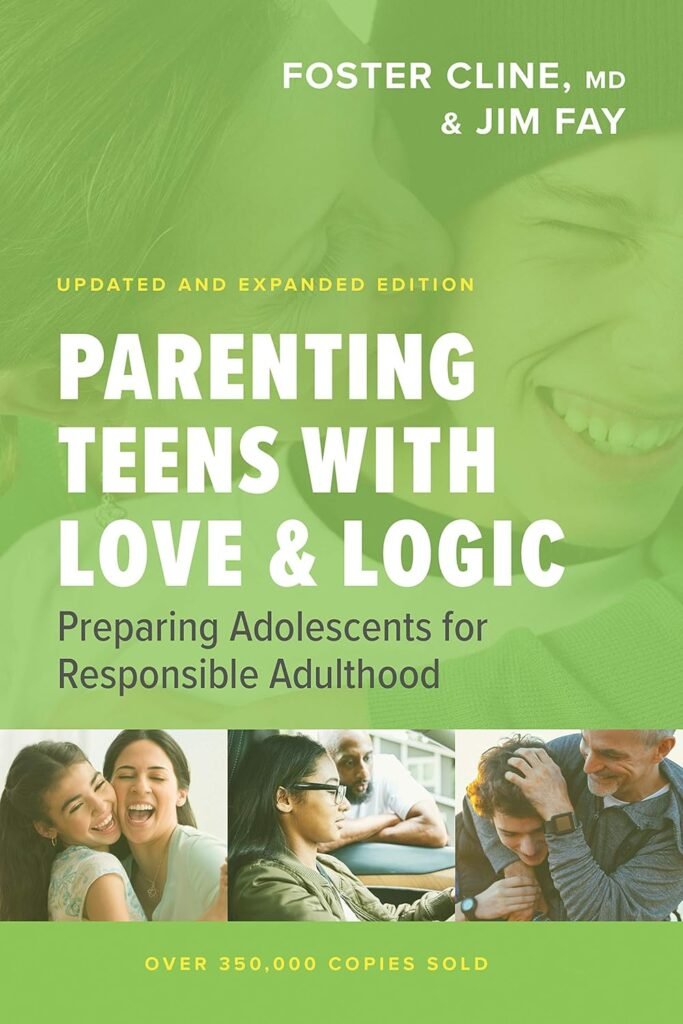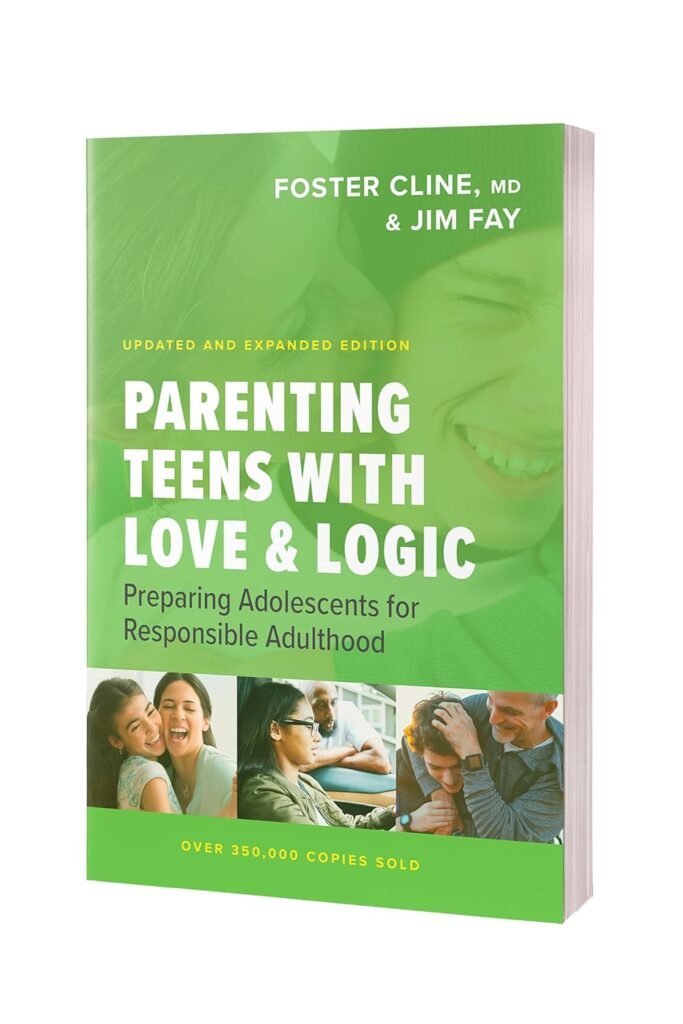Have you ever felt like raising a teenager is akin to trying to herd cats while simultaneously solving a Rubik’s cube blindfolded? If your answer is a resounding “Yup!” followed by a guttural sigh, then you might be in the right place. Welcome to the world of “Parenting Teens with Love and Logic: Preparing Adolescents for Responsible Adulthood Paperback – September 8, 2020,” where the mythical promise of navigating the turbulent teenage years with grace and humor is, without actually confirming any mythical matters, suggested.
This image is property of Amazon.com.
The Enigma of the Teen Brain
Believe it or not, teenagers do not actually have peanut butter for brains. Contrary to popular belief, their neurons occasionally fire in somewhat sequential patterns. This book, penned by experts who statistically are better at this than the average bear—or parent—throws a lifeline into that chaotic whirlpool called adolescence. With insights that aren’t completely bonkers, it gives you the sensation that you’re not pulling your hair out strand by strand.
The Love and Logic Combo: Unlikely Best Friends
Picture love and logic as a buddy-cop movie from the ’80s. Love is the partner with a soft heart, always willing to give proactive hugs, whereas Logic is the type with a no-nonsense attitude and a clipboard. Together, they work to solve the mystery of the moody teenager terrorizing your household. The book advocates balancing nurturing warmth with grounded boundaries—kind of like trying to keep soup from spilling all over while riding a unicycle.
Table of Concepts: Love Versus Logic
| Concept | Description |
|---|---|
| Love | Warmth, empathy, that marshmallowy feeling |
| Logic | Consistent limits, rational decision-making |
| Balance | Dance of combining compassion and consistency |
[aiwm-amazon-card title=”Parenting Teens with Love and Logic: Preparing Adolescents for Responsible Adulthood Paperback – September 8, 2020″ image_url=”https://m.media-amazon.com/images/I/81PJj5QCUmL._SL1500_.jpg” product_url=”https://www.amazon.com/dp/1641581557?tag=ledlightin05e-20″ original_price=”19.99″ discounted_price=”13.71″ currency=”USD|$” availability=”In Stock” disclaimer=”As an Amazon Associate, I earn from qualifying purchases”]
A Chapter for Every Mood Swing
There’s this magical thing about teenagers—they have more mood swings than a soap opera. Fortunately, the book manages to tackle these emotional rollercoasters with a series of chapters each armed with their own peacekeeping strategies. Whether your teen is moping about because they didn’t get enough likes on their latest post or questioning the very nature of existence, there’s something here for you. Trust me; it’s like having a parenting guide that’s slightly less perplexing than IKEA instructions.
Applying Logic to Emotional Soup
Try blending love and logic by using practical examples you’d find in this book. It’s like running those weird baby experiments again—except this time, the subjects have a penchant for eye-rolling and communicate mostly in grunts and shoulder shrugs. Do yourself a favor and equip yourself with these examples, kind of like stocking up on nachos before a thunderstorm hits.
Example: Negotiating Curfews
You think you have the reasoning skills of a trial lawyer until you’re asking your teenager why they need to stay out until midnight. While your inner Sherlock Holmes is gearing up for a battle of wits, this book advises you to practice calm and collaborative problem-solving instead. It suggests starting with open-ended questions that sound positively wholesome compared to the involuntary sighs echoing through your soul.
This image is property of Amazon.com.
Handling Those “I Know Everything” Attitudes
Ah, the majesty of the adolescent brain—a domain where every 16-year-old is certain they’re the reincarnation of Stephen Hawking. This book skillfully navigates the assumption that cross-examining homework advice is akin to wrestling an intellectual god. It emphasizes patience, practice, and maybe an extra glass of wine, which isn’t technically in the book, but it should be.
Stopping Power Struggles
The snaggletoothed beast known as “Power Struggles” is the bane of many households. Whether it’s about doing laundry or just existing in the same dimension, the book treats these struggles like WWE smackdowns in need of seasoned refereeing. Employ diplomatic Jedi-mind tricks to redirect their rebellion into something more constructive—like proper dishwashing techniques. Who knew dishwater diplomacy could save mankind?
Table: Common Power Struggles and Suggested Detentes
| Power Struggle | Suggested Detente |
|---|---|
| Homework Procrastination | Create a distraction-free zone, offer rewards |
| Curfew Conflicts | Mutually agreed rules, emphasize safety |
| Screen Time | Balancing tech use with other activities |
This image is property of Amazon.com.
Communication: Much More than Grunts and Eye Rolls
You might think communicating with a teenager is similar to conversing with a cat. Sure, you can both meow, but it doesn’t mean you understand how Felix feels about his third breakfast. The book takes a deep (yet not actually nose-diving) interest in facilitating communication that’s nearly as miraculous as getting a response without “whatever” in it.
Listening without Losing Your Marbles
The authors propose a novel idea: listen without immediately correcting every faulty syllable or ungh-attached clause. This technique might involve perfecting that concerned-nodding face or enduring entire lyrical breakdowns of the latest pop hit. But in the grand cosmic scheme, this patience-building exercise offers fertile ground for fostering mutual respect and understanding.
Embracing Silence
What if the sage advice here is that not every silence must be filled with life lessons or Dadaist monologues? Utilizing quiet moments can lead to breakthrough insights, just like how the best ideas often happen during showers or under the influence of spontaneous epiphany-inducing tacos.
This image is property of Amazon.com.
Boundaries: The Invisible Fences of Parenthood
If you thought setting boundaries was a parental myth, like unicorns or finding matching socks, think again. This book paints boundaries as essential for both teens and parental sanity—almost as essential as those extra coats of under-eye concealer after late-night turmoil rattles any dream of a peaceful sleep.
Practical Boundaries are Not Optional
Setting rules doesn’t have to be like Narnia’s stone table decrees—stern, unforgiving tablets handed down from a grumpy Aslan wannabe. Instead, it recommends flexible frameworks emphasizing empathy and sensitivity to evolving needs. You’ll tap-dance between brave resolution and mutual understanding, like trying to balance a seesaw with reasonable expectations on one side and hormonal hurricanes on the other.
This image is property of images.pexels.com.
Final Thoughts: Is It Worth It? Yes or No?
Here’s the bottom line: the book “Parenting Teens with Love and Logic” delivers more than just an avalanche of theoretical hoo-ha. It doles out practical advice that doesn’t patronize or assume expertise more profound than your coffee-induced sleep-survival reflexes. It’s worth the paper it’s printed on, particularly for parents willing to approach this chaotic circus called parenting teens with a modicum of patience and humor.
Remember, if you give this book a whirl, it might not make your teen trade anarchy for angelic behavior overnight. But it will arm you with a shiny suit of understanding, complete with gaping room for laughter—that divine balm which eases all teenage-inflicted woes. Cue cinematic fade-out with hope and background swing music.
Through all the love, logic, and pure gumption to survive, rest assured: you’ve got this. Or, at least, you’re moderately winging it in brilliantly messy style. Keep calm and parent on, brave soul!
Discover the latest books on parenting teenagers as well as tips and tricks on how to cope with your teen while keeping your mental health intact.
Disclosure: As an Amazon Associate, I earn from qualifying purchases.












0 responses to “Parenting Teens with Love and Logic Review”
Isnt it ironic how were trying to apply logic to parenting when teenage brains themselves are a beautiful chaos?
Interesting review! But can love and logic really go hand-in-hand when dealing with the unpredictable nature of the teenage brain?